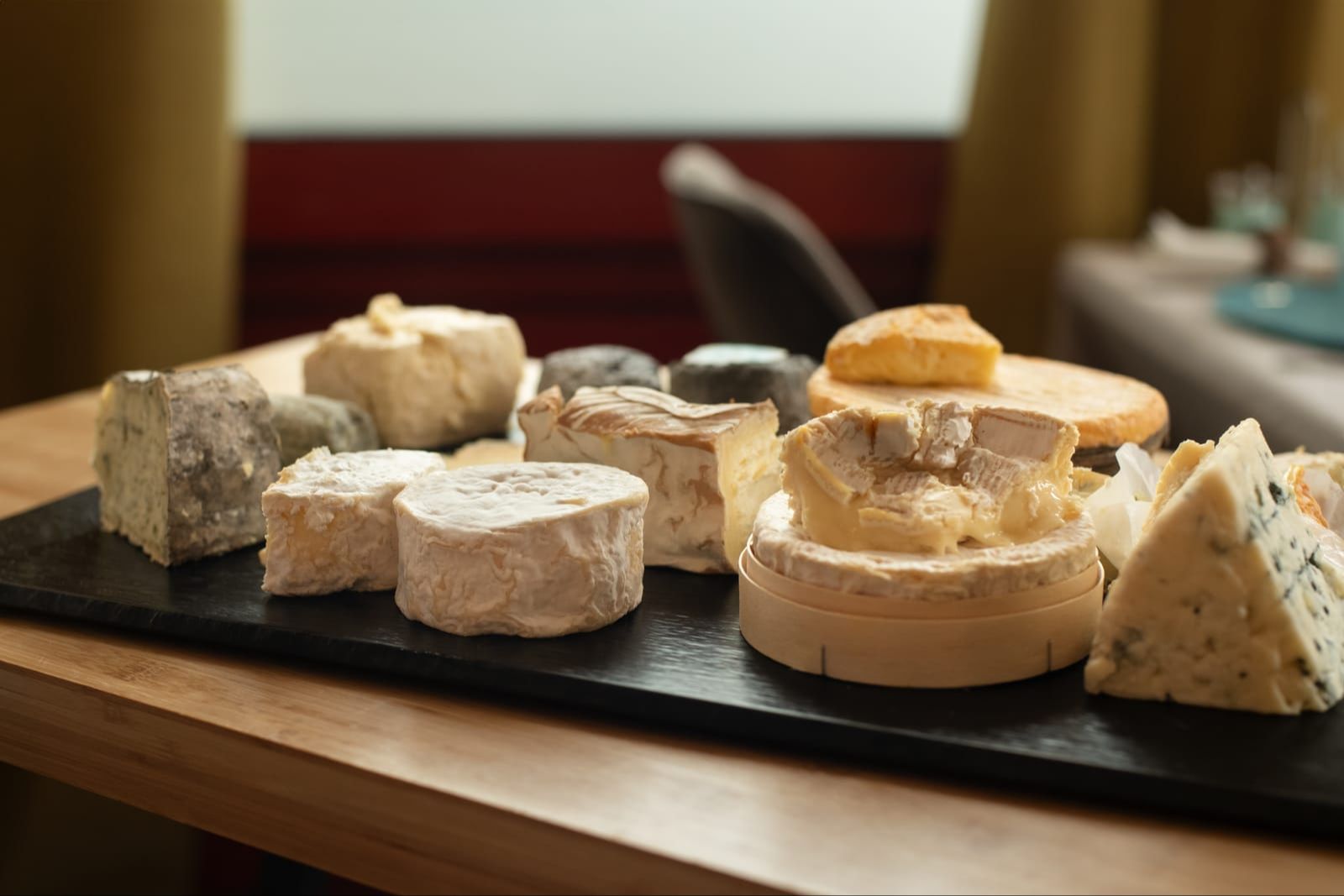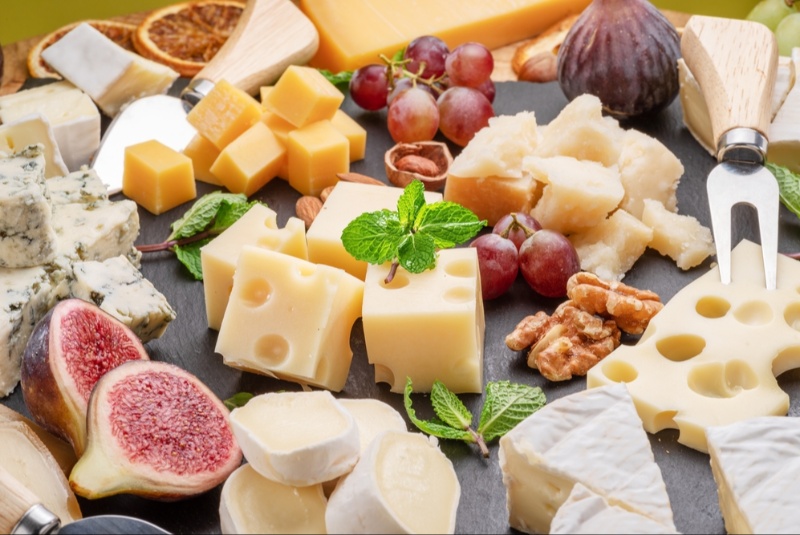Cheese comes in a wide variety of types, each offering distinct textures, flavors, and uses. From soft cheeses like Brie and Camembert to hard cheeses like Parmesan and Pecorino, knowing the differences can help you make better choices. Fresh cheeses, such as Ricotta and Mozzarella, are typically milder and best consumed quickly, while aged cheeses have stronger flavors and a longer shelf life. Some cheeses are made from cow’s milk, while others are produced using goat or sheep’s milk, which can significantly alter their flavor profiles. Understanding these categories will help you pick the right cheese for your needs and tastes.
Always Taste Before You Buy
One of the most important tips when buying cheese is to taste it first whenever possible. Tasting allows you to assess the flavor, texture, and aroma, ensuring that the cheese meets your expectations. Many specialty cheese shops and markets offer samples, giving you the opportunity to explore different varieties and discover new favorites. Even if you think you know what you want, tasting first can reveal subtleties in flavor that may surprise you. Always ask for a sample before committing to a purchase, especially if you're buying a cheese you're unfamiliar with or planning for a special occasion.
Pay Attention to the Milk Source
The type of milk used in cheese production greatly influences its flavor, texture, and nutritional content. Cow’s milk is the most common, providing a creamy and mild flavor in cheeses like Cheddar and Gouda. Goat’s milk cheese, such as Chèvre, has a tangy, slightly tart flavor, while sheep’s milk cheeses, like Manchego and Roquefort, are richer and often more complex in taste. Buffalo milk, used in Mozzarella di Bufala, creates a unique creamy texture. When buying cheese, consider the milk source to match your flavor preferences and dietary needs, as certain types of milk are easier to digest for some people.
Look for Seasonal Varieties
Cheese, like many agricultural products, has seasonal variations. Some cheeses are best enjoyed during certain times of the year, as the milk used to make them changes with the seasons. For example, cheeses made from summer milk, when cows, goats, or sheep are grazing on fresh pasture, often have more complex flavors and a richer texture. In contrast, winter cheeses, produced when animals are fed hay or silage, may have a milder taste. Keep an eye out for seasonal varieties, as they can offer unique flavors that aren’t available year-round, providing an exciting way to explore cheese.
Consider the Age of the Cheese
The age of a cheese can dramatically affect its flavor, texture, and how you use it. Fresh cheeses like Ricotta or Feta are soft, mild, and moist, ideal for salads or spreading on bread. Aged cheeses, like Parmesan or aged Gouda, have a firmer texture and more concentrated flavors, often becoming crumbly and salty over time. The longer a cheese is aged, the more pronounced and complex its flavor becomes. Consider how you plan to use the cheese and whether you prefer a young, soft cheese for melting or a more mature cheese for grating or pairing with wine.
How to Store Cheese Properly
Storing cheese properly is crucial to maintaining its flavor and texture. Wrapping cheese in plastic can suffocate it, causing it to spoil more quickly. Instead, use wax paper or parchment paper to wrap the cheese, then place it in a loose plastic bag or airtight container. This allows the cheese to breathe while preventing it from drying out. Different cheeses require different storage conditions—soft cheeses should be kept in the refrigerator, while hard cheeses can be stored at slightly warmer temperatures. Avoid storing cheese near strong-smelling foods, as it can absorb odors, altering its flavor. Proper storage extends the life of your cheese and ensures it stays fresh longer.
How to Pair Cheese with Wine and Food
Pairing cheese with the right wine or food can enhance its flavor and create a memorable dining experience. A general rule of thumb is to pair mild cheeses with lighter wines and stronger cheeses with more robust wines. For example, fresh goat cheese pairs well with crisp white wines like Sauvignon Blanc, while an aged Gouda complements a bold red like Cabernet Sauvignon. Additionally, cheese can be paired with fruits, nuts, and honey to bring out its flavors. Experiment with different combinations to find your perfect pairings, elevating your cheese-tasting experience to a new level.

Understanding the Cheese Rind
Cheese rinds come in various forms—some are edible, while others are not. Natural rinds form during the aging process and can add texture and flavor to the cheese. Examples include the hard rind on Parmesan or the moldy rind on Brie. Washed rind cheeses, like Epoisses, have a sticky orange exterior from being washed in brine or alcohol, giving them a stronger, funkier flavor. Waxed or plastic-coated rinds, commonly found on Gouda or Cheddar, are not meant to be eaten. Understanding the rind helps you appreciate the cheese better and decide whether you want to eat or discard it.
Organic vs. Conventional Cheese
With growing interest in organic foods, many consumers are curious about the benefits of organic cheese. Organic cheese is made from milk produced by animals raised on organic farms, where they are not treated with synthetic hormones, antibiotics, or genetically modified feed. This often results in higher-quality milk and, in turn, better-tasting cheese. Additionally, organic farming practices tend to be more environmentally friendly. However, organic cheese can be more expensive than conventional options. When buying cheese, consider whether organic certification is important to you and whether you notice a difference in taste or quality that justifies the price.
Cheese from Artisanal and Small Producers
Buying cheese from small, artisanal producers can offer a richer and more diverse cheese experience. Artisanal cheese makers often use traditional methods and pay close attention to the quality of their milk and the cheese-making process, resulting in unique, high-quality products. These cheeses are often made in small batches, with attention to detail that mass-produced cheese cannot replicate. Supporting small producers also promotes local agriculture and sustainability. When available, try exploring cheese from smaller farms or specialty cheese shops, where you can discover new varieties and enjoy a more authentic cheese-tasting experience.
How to Select Cheese for Cooking vs. Snacking
The cheese you choose for cooking may differ from the cheese you’d select for snacking or a cheese board. For cooking, you’ll want cheeses that melt well, such as Mozzarella, Gruyère, or Fontina, which are ideal for pizza, gratins, and sandwiches. Hard cheeses like Parmesan or Pecorino are perfect for grating over pasta or salads. When selecting cheese for snacking, consider softer, milder cheeses like Brie, or go for more robust flavors like aged Cheddar or Blue cheese. Understanding how different cheeses behave when heated or eaten on their own ensures you get the most out of their flavors and textures.
Buying cheese may seem straightforward, but understanding its varieties, flavors, and characteristics can greatly enhance your enjoyment. By paying attention to factors like milk source, age, and storage methods, you can ensure you’re getting the best cheese for your tastes and needs. Whether you’re selecting cheese for a special occasion, everyday snacking, or cooking, these tips will help you make more informed choices. From organic options to artisanal selections, there’s a whole world of cheese to explore, and by following these guidelines, you can elevate your cheese-buying experience and discover new favorites.





